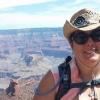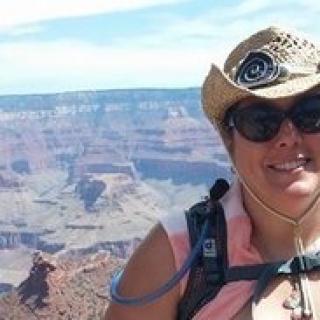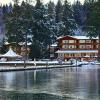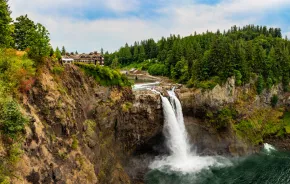
Yakima is known for its grapes, Sequim for its lavender and Wenatchee for its apples. Increasingly, the southwest Washington coast is drawing visitors for its blueberries, cranberries, oysters and mushrooms.
State Route 103 is a historic state highway that threads through the Long Beach Peninsula in picturesque southwest Washington, where agricultural wonders are punctuated by historic sites and coastal overlooks. Puget Sound families generally begin this route by heading south on I-5, connecting to State Route 101 in Olympia, and then continuing to Route 103.
Nicknamed the Cranberry Coast, the region offers a host of scenic options for families to explore, including a 28-mile tranquil stretch of flat, sandy beach that is patched with spiky grasses and fully accessible to the public. Autumn is a perfect time to visit, and while Seattle and Olympia residents can make a day trip, the area is best enjoyed with an overnight at one of its hotels or beachside campsites.

Cranberry Coast history
European immigrants began farming the tart fruit on the Long Beach Peninsula approximately 150 years ago after noting the wild growth of native cranberries. In the early 1870s, a visitor from Massachusetts observed the berry farming and remarked on the region’s similarity to Cape Cod. Subsequently, a partnership of four entrepreneurs purchased approximately 1,600 local acres for as little as a dollar an acre. Today, the majority of Washington cranberry farms belong to an Ocean Spray cooperative.
As days shorten and temperatures cool, festivals celebrate the coastal destination’s heritage of farming, history and music along Willapa Bay. “Fall is a peaceful time at the beach with fewer people, days of spectacular weather mixed with an occasional storm,” Andi Day, executive director of Long Beach Peninsula Visitors Bureau says.
Below, we’ve listed some must-see agritourism stops for your family’s Long Beach Peninsula getaway this autumn.
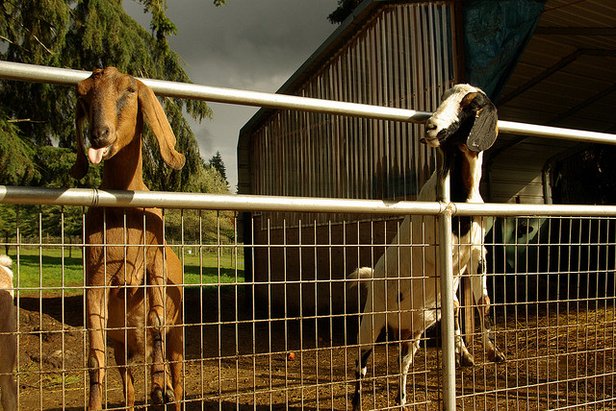
1. Buy pumpkins and apples at Lattin’s Country Cider Mill & Farm
On the way to the Peninsula, take a break in Olympia to visit Thurston County’s best farm for families with children. Lattin’s raises goats, ducks, turkeys, rabbits and other animals that guests can feed. Families can purchase a bag of food at the store to feed the enormous tom turkey, goats, chickens, roosters, pigs, calves, bunnies and lambs. A goat enclosure allows children to lead the goats around a two-story fort.
The farm’s Apple Festival features tractor wagon rides, U-pick pumpkins and an outdoor maze. The farm’s store sells fresh apple cider, farm fresh eggs, fruit syrups, dried fruit, honey, jam, smoked salmon, cheese and crisp apples. You can also purchase a wide assortment of frozen, ready-to-bake pies (and bake them later at your rental condo in Long Beach!).
Location: Lattin's, 9402 Rich Road S.E., Olympia. 360-491-7328
Hours: Open daily 9 a.m.–5:30 p.m.

2. Pick cranberries and holly at Cranguyma Farms
After Lattin's, head south on Route 101 and connect to Route 103 on the Long Beach Peninsula, where farm visiting opportunities abound. Carol Zahorsky of the Long Beach Peninsula Visitors Bureau says that while the Long Beach-Ilwaco peninsula has been acclaimed for years for its mushrooms and oysters, colorful produce farms and berry bogs are increasingly attracting visitors. Many can be seen north of Long Beach on Sandridge Road.
Among the farms around Sandridge is Cranguyma Farms, a 1,200-acre farm that grows cranberries, blueberries and holly. The fifth-generation farm provides a historical view of traditional farming, and offers U-pick opportunities for families. Blueberry season runs July through October (it's now finished) while cranberry season is in October and November. Visitors are welcome to stop by to see the harvesting, and can call to see if U-pick cranberries can be arranged. Holly is harvested in November and December.
Location: Cranguyma Farms, 3206 113th Lane, Long Beach. 360-642-3201
Hours: Open daily from 8 a.m.–6 p.m. Get updates on their website.

3. See a cranberry bog at harvest at CranMac Farm
Heading south to Ilwaco, you'll find CranMac Farm, a cranberry operation owned by Malcolm McPhail, one of the most prolific growers of cranberries in Washington. His farm is located near Black Lake, and families are welcome to watch the annual harvest, which typically happens in October, with less intense harvesting extending through November.
McPhail, who grew up on a ranch in California, began growing cranberries on the Long Beach Peninsula in 1981 after learning that he could make a living as a cranberry farmer while he was working as a WSU Extension Agent. Typically (please confirm), visitors can arrive at CranMac Farm around mid-morning to see the lively action.
“The best time to watch is usually from 10 to noon,” McPhail explained. “Hip waders are in good supply and can be borrowed. Otherwise, people don’t need boots."
The day before harvest, McPhail floods the bogs so that all the vines are covered, then a beater is used to separate the berries from the vines. The berries float to the surface and need to be gathered early the next morning into areas where they can be elevated from the bogs, crated and driven to the Ocean Spray processing facility in Long Beach.
Keep an eye out for wildlife. Animals that frequent the bogs include cranberry-eating deer, black bears and the occasional herd of elk. The McPhails maintain about 30 boxes for tree swallows, and also have boxes for wood ducks and poles for raptors. Red-tailed hawks and osprey can often be seen perched on the poles.
Location: CranMac Farm, 2500 Sandridge Road, Ilwaco
Hours: The best informal viewing of the harvest is from mid-morning to noon. Confirm it's okay to visit or arrange formal tours by contacting Ardell McPhail by email at cranmac@willapabay.org, or call 360-642-4938. Parking tips: Park at the farm or alongside the roadways, not at the dikes, McPhail says.

4. Explore regional history at Columbia Pacific Heritage Museum
Also in Ilwaco, the Columbia Pacific Heritage Museum showcases the region's unique history, including a permanent exhibit on the Chinookan people who originally lived in the region, displays on life in an old-time coastal community and a temporary exhibit on the history of Washington Indians. Annually, the museum hosts the Cranberrian Fair where families share in the heritage of the century-old cranberry harvest (it occurred Oct. 10 and 11).
On Nov. 7 and 8, the museum will participate in the "Ocian in View" Cultural Weekend, a nod to the creative language present in Lewis and Clark journals. A legacy of the Lewis and Clark Bicentennial Commemoration, the weekend presents programs and tours that illuminate history at the mouth of the Columbia River.
Location: Columbia Pacific Heritage Museum, 115 S.E. Lake St., Ilwaco
Hours: Open 10 a.m.-4 p.m. Tuesday–Saturday, and Sunday noon-4 p.m. For more information, please visit columbiapacificheritagemuseum.org.

5. Explore history at the Lewis and Clark Interpretive Center and nearby lighthouses
On the coastal outskirts of Ilwaco at Cape Disappointment State Park, the family-friendly Lewis & Clark Interpretive Center provides accessible history lessons along with dramatic maritime views. Newly installed exhibits at the Interpretive center immerse young guests in interactive farmhouse displays, beginning with early farmers and leading up to present-day agriculture.
Also at Cape Disappointment State Park, families can take easy hike to see two lighthouses: Near the Interpretive Center on the north end of the park, visit North Head Lighthouse, first lit in 1898. Perched on cliffs overlooking the Pacific Ocean, the lighthouse is open for tours on weekends during the summer. Two miles away, Cape Disappointment lighthouse perches above the treacherous mouth of the Columbia River. Cape Disappointment, Washington’s first lighthouse and one of the first on the West Coast, was lit in 1858. It overlooks the area where Lewis and Clark first saw the Pacific.
Location: Cape Disappointment State Park, Lewis and Clark Interpretive Center, 244 Robert Gray Dr., Ilwaco
Hours: The interpretive center is open daily, year-round, from 10 a.m.–5 pm. You'll need a Discover Pass for parking at the park.
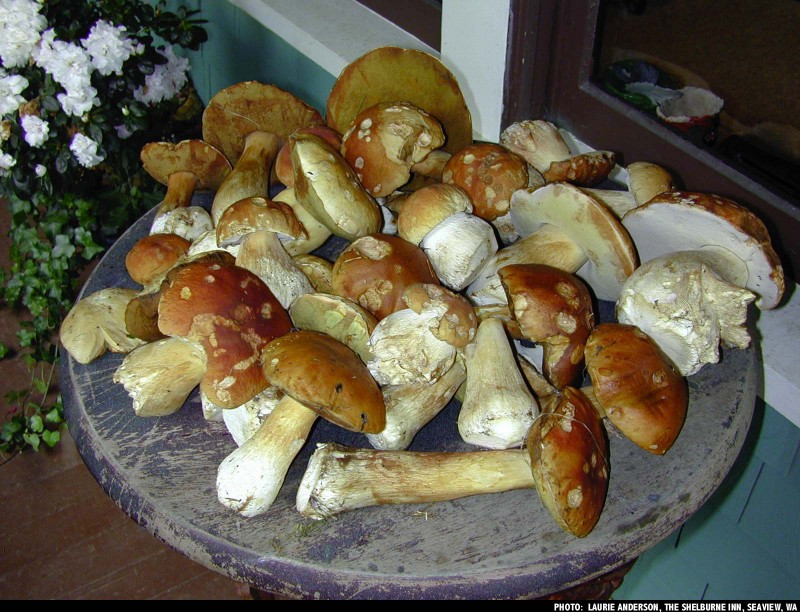
More activities around Long Beach
Celebate wild mushrooms, through Nov. 15
Bike the Discovery Trail, an 8.5-mile paved path
Explore more Lewis & Clark history
For more information about activities in the area, visit the Long Beach Visitors Bureau website
Lodging around Long Beach
The Breakers: This condo resort was designed with families with children in mind. Units feature full kitchens, balconies and private bedrooms. Its 24 acres of beachfront parkland enable guests to walk on the beach. There is an indoor pool and free bike rentals. Located on Highway 103 at 26th Street in Long Beach. Call 800-219-9833 or visit breakerslongbeach.com.
Adrift Hotel and Spa: Conveniently located in the center of Long Beach, this 80-room hotel’s amenities include ample board games, free cocoa and bike rentals, and pet-friendly rooms. The property is walking distance to several family-friendly attractions including horseback riding and the World Kite Museum. The family-friendly onsite restaurant, Pickled Fish, offers view of the Pacific ocean and wood-fired pizzas featuring ingredients from local farms. Located at 409 Sid Snyder Drive in Long Beach. Call 800-561-2456 or visit adrifthotel.com.



